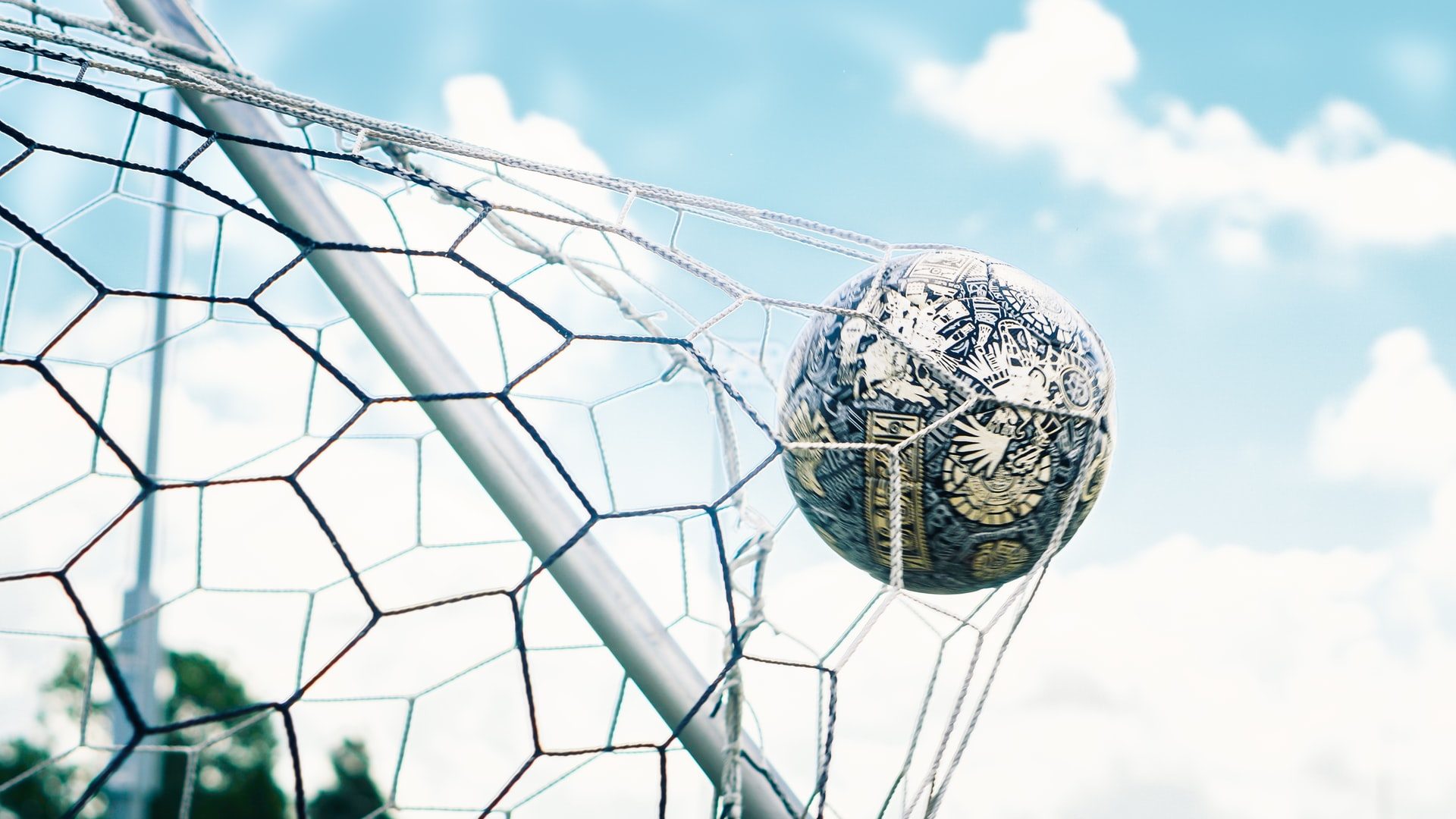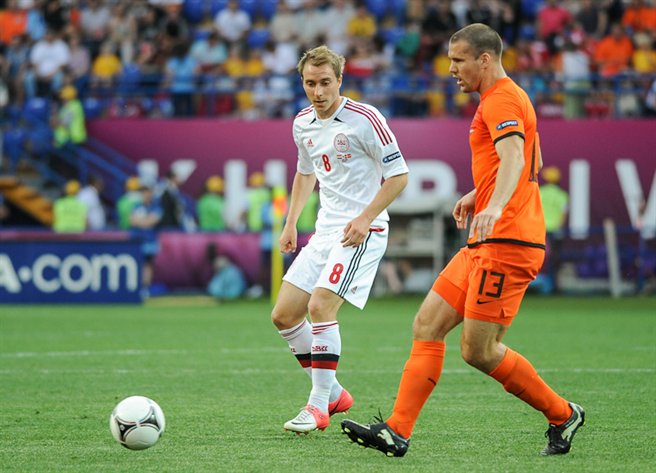
For a millisecond, Copenhagen’s Parken stadium fell silent in the 42nd minute of the Denmark-Finland match, when the Danish international footballer, Christian Eriksen fell to the ground during a pass with another player. His teammates signaled the emergency and, in a few seconds, formed a protective shield around the fallen player. The emergency response team rushed to the athlete and began the resuscitation and defibrillation procedures. Eriksen was taken off the field on a stretcher and the match was suspended. Eriksen’s life partner, Sabrina Kvist Jensen, went on the field, convinced that the father of her two children had died. Fortunately, the players of the Danish team assured her that Eriksen is alive.
“His condition is stable and he continues to be hospitalised for further examination”, the Danish officials said in a statement the next day. The Danish national team doctor, Martin Boesen, later said: “We don’t have an explanation to why it happened. (…) He was gone. We did cardiac resuscitation, it was a cardiac arrest. How close were we to losing him? I don’t know, but we got him back after one defib [defibrillation] so that’s quite fast. The examinations that have been done so far look fine.”
Christian Eriksen. Did the show really have to go on?
Transported to Rigshospitalet, Christian Eriksen was stabilized and, one hour after the incident, the Danish Football Association and UEFA reported that the player was awake. The match was resumed the same evening, without Eriksen and ended the Danish team defeated 1-0. The coach of the losing team, Kasper Hjulmand—who had initially announced that Eriksen wanted them to carry on—“We have to see if we can gather ourselves and go out and play for Christian”—later regretted the decision to resume the match.
Captain Kjaer was replaced in the 63rd minute, and the technician explained the decision saying that “Kjaer was very, very touched. They are [Kjaer and Eriksen] very good friends. He wanted to try continue playing, but it was impossible. Feelings overwhelmed him. It is totally understandable”.
UEFA officials asked the players if they wanted to continue the match right away (after learning that Eriksen was stable) or the next day at noon—providing a slight bit of recovery time to help the players regroup and reassess in the wake of trauma. “Looking at it now, I think it was the wrong thing to ask the players to choose between these scenarios. They were not sure if they had lost their best friend. I have a sense that we shouldn’t have played. It’s a feeling I have, we should have gone on the bus and go back home. It was a tough decision. Players had to make a decision, I know it’s difficult, but I have a sense it was wrong”, Hjulmand said.
Danish coach Michael Laudrup, a former football player, is convinced that “when such things happen, you are in the throes of your emotions, and you do not have the capacity and oversight to make important decisions. There must be someone who says ‘now we’re going to do this, and now we stop here’. They were given a choice that is not a choice – play tonight, or play tomorrow at 12. I think that, I’m sorry, but that is not a choice.”
UEFA has been criticized for deciding to resume the game so quickly. Former Manchester United goalkeeper Peter Schmeichel has accused UEFA officials of lack of empathy: “They should have shown a little bit of compassion, and they didn’t”.

Football.ua, CC BY-SA 3.0 GFDL, via Wikimedia Commons
Other athletes have seen in UEFA’s attitude a continuation of a toxic philosophy, which has been constantly felt in sports arenas, in recent years. Bosnian goalkeeper Asmir Begovic believes that Christian Eriksen’s accident was caused by the overloaded schedule that the athlete had to follow in this season and finds that this tendency raises a red flag regarding other sad incidents that could occur. “The health and wellbeing of players has long been ignored”, Begovic tweeted. “Shoving more and more games in more condensed periods will only lead to bigger health issues for players. Let’s hope the people in power will take notice at some point.”
These health issues can be seen in the variety of common sports injuries that players consistently suffer from. While different sports require different disciplines and result in different injuries, hearing about an athlete falling on their right leg suffering a knee injury or compound fracture, or a player overexerting themselves in practice and as a result suffering a torn ACL which will require surgery or rehabilitation that may keep them from playing in the following season. The issues also may not be physical, as seen in the recent controversy surrounding Naomi Osaka pulling out of the French Open to focus on her mental health. With all these issues, it’s not surprising that many are turning to alternative methods in an attempt to counter the problems.
A busy schedule means not only physical overload, but for many players it also means anti-inflammatory drugs abuse. A study conducted by the former head of the International Football Federation (FIFA), Jiri Dvorak, and published in the British Journal of Sport Medicine, found that no less than 60 per cent of the footballers who participated in FIFA tournaments between 2002 and 2014 took at least one nonsteroidal anti-inflammatory drug and about 40 per cent reported taking an anti-inflammatory drug before each game. Although medically, they have no benefits for athletes (on the contrary) many athletes have reported that they have been instructed by doctors to take anti-inflammatory drugs as a method of prevention or as treatment for muscle pain.
The tightening of the working conditions of professional footballers only adds an extra shade to the bleak picture of the sports environment, whose negative characters constantly seem to be the professional sports associations and their bad decisions, which have long term consequences. This picture most often remains hidden from the eyes of the fans. However, even when details of it are seen by the general public, efforts to remedy the situation are rather anemic.
Christian Erikson’s heart attack and Concussion
Concern over the welfare of sports athletes has been increasing in recent years. In 2002, American football player Michael Lewis Webster died of a heart attack at just 50 years old. After his death, pathologist Bennet Omalu examined brain tissue samples from Mike and eight other former players in the National Football League (NFL), and the results of his analysis would cause a hurricane in the sports industry, even if not on the spot.
In all nine players, Dr. Omalu had observed brain injuries similar to those encountered in Alzheimer’s patients or boxers with “pugilistic dementia”. Post-mortem, Mike Webster was diagnosed with chronic traumatic encephalopathy, a degenerative brain disease acquired from the repeated blows to the head the football player had taken throughout his career. The NFL ignored these results for a time, until 2009, when another player, dead at the age of 26 this time, was diagnosed with the same disease as Mike Webster and his colleagues.
When the discovery broke out in a national scandal, Webster’s family sued the League. The former footballer had spent the last years of his life amnesiac and in a terrible physical condition. He lived in a truck and was cared for by his teenage son. Seventeen years after Webster’s death, in 2019 (the most recent year we could find data on), the NFL is still challenging in court a judge’s decision to compensate the family for the suffering endured in the last years of the athlete’s life.
The true story of Dr. Omalu’s discovery was artistically portrayed in the film Concussion, starring Will Smith.
The disease he discovered and which earned him public recognition, also caused a stream of death threats against Dr. Omalu. Under immense pressure, Omalu said that what helped him continue in his efforts was his faith. A faith he says comes with his love of science. “Faith and science go together”, he said in an interview with the Religion News Service. “They are not antagonistic to each other. There is the humanity of science. Science seeks the truth. Faith seeks the truth. So there is a commonality between science and faith. I think the faith community’s a very powerful agent of change, agent of information, education and enlightenment”, the doctor added, before adding that he is “not anti-football”.
Christian Eriksen does not play alone. The industrialists
The problem does not seem, of course, to lie in the sport itself, but in its industrialization. This has been highlighted again and again by various scandals regarding major sports leagues, and what aggravates it is that, on many occasions, major associations’ officials have been silent for years, perpetuating the abuse through their complicity, which has taken various forms. Top gymnasts such as Kristie Phillips, Erica Stokes and Dominique Moceanu have previously talked about the difficult physical-emotional climate in which training took place (see the “Pretty Girls in Pretty Boxes” book). However, recent allegations also call out the highly controversial strategies for motivation and performance training.
Just like the NFL, it is clear that there is a problem here—but not with the athletes. The issue comes from those in charge who view the sport as a business. Instead of prioritising the wellbeing and concerns of the talent who form the backbone of the industry, it seems that many sports organisations are far more concerned with profit and commercialisation. This may take many forms—be it covering up detrimental health effects in the NFL, consistent abuse in the gymnastics sphere or regular drug use in the sport of football—but it always ends up hurting the health and wellbeing of the players who are responsible for the profit these executives chase.
Now that we know…
“As the new season arrives we embrace the attitude ‘Let the games commence’ and contemplate new rounds of physical suffering—torn hamstrings or menisci, stress fractures, and concussions or worse¬—from the comfort of our [lions’] dens and living room sofas. We probably do not think of ourselves as Romans consuming barbarity in the ancient Colosseum. Many of us may have never really processed the price of player injuries”, American pastor Tim Ponder wrote in 2014. How did this description come to apply so well to sports fans, who, in the end, love their sports idols and would never wish them harm?
The point we have reached is so complex that retracing the steps is nearly impossible. Sports delight and inspire the public, serving as an implied guarantee that those peaks that athletes reach are the peaks that we, ordinary people, could reach if we dedicated ourselves enough. In this sense, sports exist for the good of society.
But this good never implies forcing athletes, reducing them to bone and muscle robots that move in a certain predetermined way, to the mechanical satisfaction of a jury. Unfortunately, sports history is littered with stories of gruesome injuries, horrific treatment of players and athletes, and mistreatment that extends beyond far beyond the popular sports season. The true good of sports stems only from balance assumed on all levels. From a fairplay whose definition should be assumed much broader than it currently is. Unfortunately, when entire networks of people depend financially on the sporting performance of a few and their ability to deliver entertainment to the public, this much-needed fairplay is prone to remain just a fairytale.
Alina Kartman is a senior editor at Signs of the Times and ST Network. A version of this article first appeared on ST Network and is reposted here with permission








